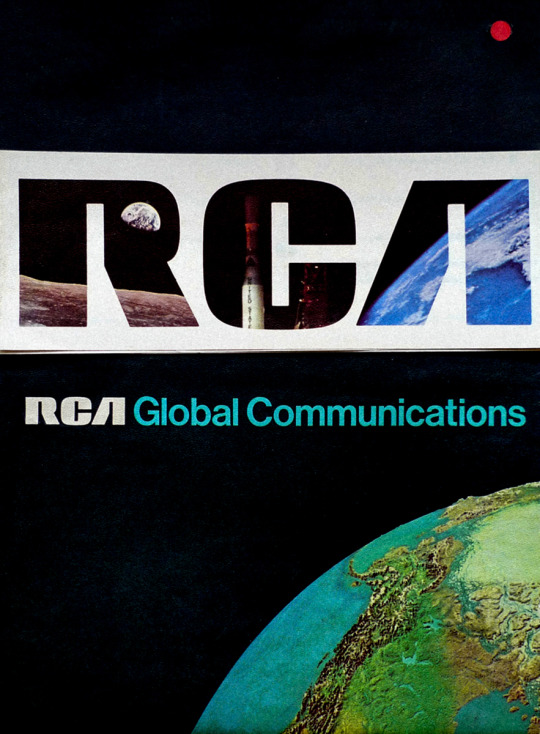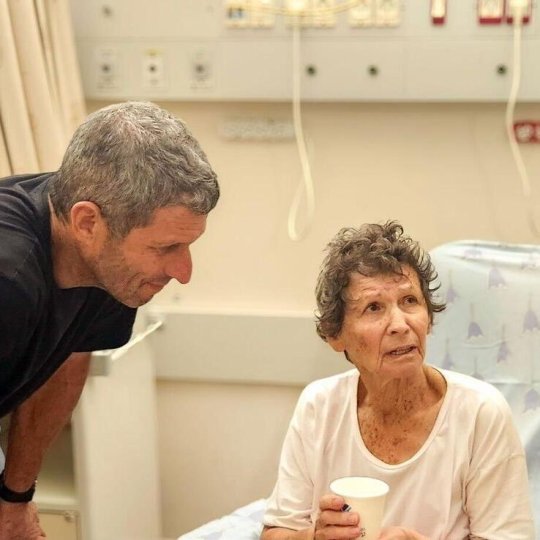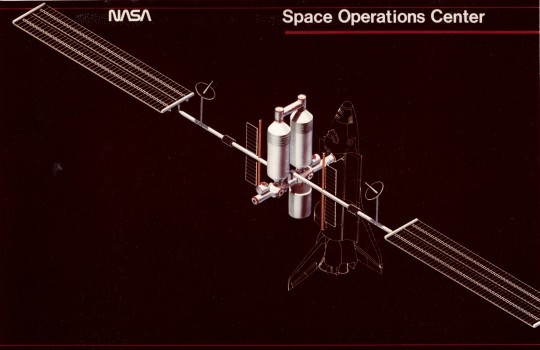#telecommunications satellite
Text
Just got back from watching Guardians of the Galaxy 3, AKA my first loves in life
I don’t care much for Marvel anymore, but holy shit that has got to be their best movie ever, it had me on the verge of an anxiety attack like 24/7, and I cried from every emotion possible, even emotions I didn’t know I had
Really just wraps everything up nicely. I was 12/13 when I watched the first Guardians of the Galaxy, around 15/16 when I watched the second one, and now here I am, 21, having pretty much grown up with these movies
Must, must, must see. I love it more than Jaskier, if that gives it any perspective lmao
#I love Jaskier#but guardians have always been my first love#when I was 16 I used to stargaze on my roof at night and ‘telecommunicate’ to every satellite that went past in case it was a guardians#spaceship to come pick me up#my bribe was that I’d even scrub the floors#and uh yeah they never picked me up but hey they gave me great taste in music#according to Spencer Reid from Criminal Minds (where I get all my psych knowledge btw) the music we listen to at 14 impacts us the most#beyond any other age#what you listen to at 14 is the most influential in your entire life#guardians of the galaxy#guardians of the galaxy 3#marvel#rocket raccoon#rocket#Peter quill#starlord
197 notes
·
View notes
Text

Keynote Excellence
At the annual Blight Industries Expo, Amity unveils the company's latest telecommunications division and introduces Abomination-powered satellites to give scrolls more processing power and data speeds.
#the owl house#toh#toh fanart#amity blight#blight industries#pantsuit#businesswoman#keynote speaker#presentation#telecommunications#satellite#abomination#scrolls
17 notes
·
View notes
Text

RCA Global Communications - 1969.
#vintage advertising#rca#rca global communications#the 60s#telecommunications#1969#satellites#broadcast satellites#communication satellites#radio corporation of america
7 notes
·
View notes
Photo

SKYPHONE By Thuraya: It’s An Android Smartphone AND A Satellite Phone Rolled Into One
Wow. Could this be a norm in the future? I mean, with an actual satellite phone packed into a regular smartphone?
Follow us for more Tech Culture and Lifestyle Stuff.
0 notes
Text
Satellite IoT Market by Service Type, Frequency Band, Organization Size, Sector (Military & Defense, Agriculture, Construction, Oil & Gas, Utilities, Transportation & Logistics, Maritime) - Global Forecast to 2030
#Satellite IoT Market#satellite iot#iot#internet of things#aerospace#space technology#connectivity#telecom#telecommunications#technology#innovation
0 notes
Text
The impending launch of OneWeb Satellite service in India presents a watershed moment in the country’s quest for comprehensive internet connectivity. Sunil Bharti Mittal’s announcement sets the stage for a future where no corner of India remains untouched by the power of the internet. As we move towards a more connected and inclusive society, Eutelsat OneWeb, with its remarkable satellite technology, is ready to transform the digital landscape of the nation. This development not only ensures that urban areas continue to flourish but also promises that rural and remote regions can participate in India’s digital future.
0 notes
Text
Global Village

We shape our buildings; thereafter they shape us.
Winston Churchill, 1943
A symbiosis between NASA and the shrinking of the world into a global village informs the provenance of the telecommunications industry. The export of satellite technology from the pages of science fiction into the ether above was first articulated by the polymath Arthur Clark in 1945. Seminal to the industry the white-paper titled ‘Extra-Terrestrial Relays’ conjured up a world not connected by short-wave radio or a lattice of undersea cables but rather by signals bounced off stations in the void of space. A web of these satellites orbiting the earth unfettered by atmospheric disturbances could be a medium for real-time communication. The sheer audacity of this idea cannot be stressed enough. When the monograph was penned humanity had scarcely pierced the boundaries of space with its primitive technology. The highest altitude recorded by a V-2 rocket topped the distance of 189km in suborbital flight (Lee 2020). Just for Clarke’s hypothetical satellite to be entertained it would need to reach the threshold of 36,000km. The grandiosity of this foresight evokes the same futurism gleaned from Leonardo da Vinci’s first doodles on the mechanics of flight centuries ahead of their invention. But rather than be dismissed as a fit of daydreaming in less than two decades were these wild speculations of satellite technology brought to life.
America’s formal dalliance with transmitting signals into the vast unknown began with President Eisenhower’s industrial policy in 1958. Abreast of Projects Mercury, Gemini and Apollo another triptych begot a quantum leap in the separate firmament of global communication during the jet age. Projects Echo, Relay and Syncom each escalating in sophistication came to experiment with bouncing microwave frequencies off passive and active satellites from ground stations below. A diverse consortium of firms brainstormed these instruments under the auspices of NASA. In the halcyon days of adventurism into the cosmos Project Echo became a totem for a proof of concept to test whether radio signals could piggyback on objects in orbit for the sake of long-distance communication. This maiden satellite from 1960 was effectively a monolithic balloon of aluminized Mylar whose reflective properties redirected signals from a laboratory in California to one in New Jersey. Initially the Aeronautics Division of the foodstuff maker General Mills was recruited to build this galactic mirror but when it was discovered that it would fray in the inhospitable vacuum of space the firm was jettisoned for the Schjeldahl company. To stave off premature ruptures of the orb’s skin a single fortified seam was introduced versus the previous patchwork.

Upping the ante in technical specifications for the sequel to Project Echo was the Relay satellite which sought to undo the tyranny of geography. Communication signals via traditional infrastructure were liable to degradation over long distances at a prohibitive cost in capital. By contrast the bandwidth of Project Relay exhibited a fidelity heretofore unseen with the bonus of transmitting across further expanses. Whereas short-wave radio failed to penetrate the vicissitudes of atmospheric conditions whether it be through fog or rain this alternative had no such deficit that may throttle it. Moreover skeptics had to be reminded about the economies of scope whereby television, radio and telephone signals could be diffused on a single piece of hardware rather than across a multitude of terrestrial stations like in legacy systems. No longer would the geometry of communication be at the mercy of oceans or mountains but instead find deliverance in the airwaves far above. Thus the utility of Project Relay was not lost on policymakers whose analysis of the costs and benefits vindicated the industrial policy to finance it. Project Relay legitimized satellites when operational expenditures were bound to plummet as the onus of maintenance was removed. Telecommunications therefore was the very first technology to commercialize space.

A jigsaw of private stakeholders pooled resources together to inaugurate this next chapter in the study of satellite technology. One particular enigma that needed to be demystified promptly was the longevity of Relay’s testbed as its honeycomb of solar cells would face a barrage of cosmic radiation in the Van Allen Belt. The rate of degradation had to be probed and then mitigated if delicate electronics were to weather the wilds of space. Any viability hinged on ensuring a lengthy lifecycle of the satellite in this minefield of hazards and so advanced measuring hardware approximated 11 percent of the weight for the first iteration (Ezell 1988: 376). The omnipresence of radiation had to be properly understood lest the enterprise become a financial sinkhole. Relay 1 in turn would be the proverbial canary in the coal mine to measure the inimical effects of these energy particles as each critical system was made redundant with a backup in the event of a malfunction. After the first launch in 1962 the second satellite in 1964 boasted upgrades with shielding far more resilient to radiation than the preceding prototype. Relay 2 learned from its sibling and later broadcast segments of the Winter Olympic Games in Austria a few days upon the start of its mission. The program was the first to master real-time communication.
In the saga of Cold War politics America paraded its soft power with the apotheosis of Syncom that followed in the footsteps of the foregoing Relay program. Although less romanticized in the public imagination than the lunar missions but of equal salience this final prototype sought a geostationary orbit above the equator relative to a fixed point on the ground. Such a static position aloft in space relayed signals for one-third of Earth in a revolution for telecommunications. This portmanteau of ‘synchronous communication’ epitomized a giant leap in technology. At an altitude of 35,768km the parity of speed between Syncom and Earth’s rotation intimated the satellite could synchronize with one location on the terrestrial surface and hover above it. In this precise position the system and its solar cells would be continuously recharged by the sun. Whilst minor propulsion difficulties hobbled Syncom 2 with its figure-eight pattern above the sky after its predecessor completely floundered the third iteration nudged itself into the coveted spot of a geostationary orbit. Instant communication was made a reality as Syncom became globalization’s progenitor where citizens were no longer spectators but rather participants to world events. NASA thus created an information super highway for the world.

In the pyrotechnics to explore and exploit the final frontier the connectivity that ensued from transmitting voice, data and video via microwaves irrevocably changed the world economy. Analogous to President Theodore Roosevelt’s industrial policy of building the Panama Canal in 1904 meant to truncate the journey around South America’s Cape Horn did NASA’s satellites induce a similar vector of growth. Government funding coupled with public-private alliances integrated markets akin to how faster transit by ship aroused the same effect although the latter clearly manifested in more analogue ways. The Information Age cultivated by satellite technology came to midwife a multi-billion dollar industry whose downstream effects hastened economic globalization. Traders on Wall Street could navigate London and Tokyo stock exchanges devoid of any lag in financials. Multinationals began to exercise greater agency in managing supply chains. Media transcended borders to diffuse a monoculture of capitalism amidst the spectre of sabre-rattling from Cold War hostilities. A digital Silk Road thereby homogenized markets as transaction times were whittled down from days to seconds. Commerce then seized upon the alacrity at which capital moved since geographical determinism was no longer germane to growth.
0 notes
Text
Musk: SpaceX might keep funding satellite service in Ukraine
Musk: SpaceX might keep funding satellite service in Ukraine
NEW YORK — Billionaire Elon Musk suggested in a Saturday tweet that his rocket company SpaceX may continue to fund its satellite-based Starlink internet service in Ukraine. But Musk’s tone and wording also raised the possibility that the irascible Tesla CEO was just being sarcastic.
Musk frequently tweets jokes and insults and sometimes goes on unusual tangents, such as a recent series of tweets…
View On WordPress
#Business#elon musk#General news#Government and politics#Military and defense#Nor#Russia-Ukraine war#Satellite telecommunications services#Space industry#SpaceX#Technology#tesla inc#U.S. Department of Defense#ukraine#United States government
0 notes
Text

Hello, everyone.
This may be the finest and most important article I've written since the creation of this blog, so kindly read it carefully and pay attention.
And share it so that everyone can see it.
There are many events happening tonight, and I will try to summarize them for you so that you have a complete understanding of what is happening.
Twelve days ago, a gruesome incident occurred, most of you have probably heard of it: the occupation forces shelled the Al-Ma'madani Hospital in Gaza, resulting in the deaths of over a thousand people, including patients, their families, doctors, and young children.
Has the occupation been content with this? The answer is no.
Since that day, they have been threatening another hospital, Al-Quds Hospital, with the promise of bombing it, leaving civilians and patients inside in a state of terror, awaiting death at any moment.
The first time this happened, it spread across social media platforms, especially Twitter, and many people protested, causing the occupation to halt its actions.
Today, twelve days after the Al-Ma'madani Hospital massacre, they have once again sent severe threats to the Palestinian Red Crescent Society (PRCS) for the immediate evacuation of Al-Quds Hospital, as it is destined to be bombed.

"🔴 Urgent: We have just received severe threats demanding the immediate evacuation of Al-Quds Hospital as it is set to be bombed.
Since the early hours of the morning, the vicinity of Al-Quds Hospital has been witnessing continuous airstrikes, resulting in the destruction of some buildings within a 50-meter radius.
📢 Please share, save Al-Quds Hospital! 📢
#GazaUnderAttack #GazaUnderSiege #Save_Al-Quds_Hospital
"
The second matter, three days ago, specifically on Friday, the twenty-seventh of this month, the occupation completely isolated Gaza from the world by cutting off the internet, telecommunications, and electricity. They were prepared for a brutal massacre that occurred that night and lasted for two days.
I'm talking about indiscriminate bombardment using all kinds of weapons on all areas of Gaza, whether they were churches, mosques, schools, or homes, regardless of their occupants, be they children, young people, women, or the elderly.
During that period, social media platforms and indeed the entire world were abuzz with the issue.
People from various backgrounds, nationalities, and religions unanimously agreed that it was inhumane to isolate them from the world and deny them the right to have a voice.
They were searching for solutions they could implement.
Some took to the streets, demanding the return of the internet, while others began sharing their plight on social media, primarily on Twitter.
They reached out to activists and officials who had the means to help.

One of the most prominent solutions that everyone turned to was contacting Elon Musk, the former owner of Twitter (X) and the current owner of SpaceX, to enable the people of Gaza to use the internet via Starlink's private satellites.
They hoped that he would hear their plea, as it was their only hope.
He tweeted:
"Starlink will support connectivity to internationally recognized aid organizations in Gaza.
[ComStar]
"

On the same day, five hours after the publication of this tweet, the Israeli Minister of Communications commented on it, saying, in essence, that they would use all available means to prevent the supply of Starlink internet to Gaza because Hamas would utilize it. He also threatened that if this were to occur, he would sever all his office's ties with Starlink.
Now, let's discuss the issue of hostages for a moment because it is of utmost importance to understanding the situation.
On the twenty-fourth of this month, Yasmin Porat, one of the hostages, came forward to talk about her experiences during her captivity.
I will now share some of what she mentioned in the interview:
She stated that Israeli forces eliminated everyone, including hostages, amid heavy crossfire and tank shelling.
She highlighted the contrasting behavior of Palestinian fighters who offered hope for safe passage to Gaza. Israeli forces disrupted this hope with a storm of gunfire.
Palestinian fighters treated the hostages humanely, offering them hope of a safe passage to Gaza, despite the chaos.
This compassionate act stands in stark contrast to the chaos that unfolded.
After the interview was broadcast, it was completely deleted and blocked from all social media platforms and even from Kan's website. Moreover, Yasmin's account mysteriously disappeared from the "Haboker Hazeh" program, raising concerns of censorship.
Below, you will find the interview recording.
During that period, the Al-Qassam Brigades continued their communication with the Israeli government in order to release some prisoners for humanitarian reasons, including their age and health, among them two elderly women, one of whom is named Yohav Levisheitz.
But the Israeli government showed no interest in the matter whatsoever.
As a result, they decided to release the two elderly women.
Before leaving, one of them, Yohav Levisheitz, insisted on shaking hands with one of the resistance fighters who she was their captor, as you can see in the following video.
-Tumblr doesn't allow me to post two videos in a single post, so I will provide the video link on the blog-:
https://www.tumblr.com/storiesfromgaza/732027117370572800/al-qassam-brigades-released-two-of-the-hostages?source=share





After this, she insisted on participating in a press conference to share her experience, saying:
"When we arrived in Gaza, they initially told us that they believed in the Quran and that they wouldn't harm us.
They said they would treat us as they do with those around them.
We were under tight security, and medical professionals arrived to ensure we had the medications we always took.
They showed great concern for our health.
Our place of rest was the mattresses.
We had an accompanying doctor who would visit us every two or three days to check on our well-being.
In addition to a paramedic who looked after us and provided us with our medications.
They took on the responsibility and made sure to provide the necessary medications.
They looked after our hygiene meticulously to safeguard our health so that we wouldn't fall ill.
It was they who took care of cleaning the restrooms, not us.
They provided us with everything we needed, and I acknowledge their help in that.
If equivalent medications weren't available, they offered suitable alternatives.
They were remarkably courteous (kind) and ensured we ate well, sharing the same food they ate (bread, cheese, and cucumbers)
We were treated with kindness, and they paid meticulous attention to every detail.
Women among them understood the importance of feminine hygiene and ensured we had everything we needed.
Hamas had meticulously planned everything for a long time, providing us with everything we required, even down to shampoo and conditioner.
The inefficiencies of the army and Shabak (Israel Security Agency - ISA) greatly impacted us; we were pawns in the government's game."


After this, Western media outlets, with CNN at the forefront, distorted Yohav's words and published that she said, "I went through hell."
BBC, on the other hand, released two versions of the statement.
They published the original statement by Yohav on their account dedicated to the Arab audience, while on their accounts for Western and Indian audiences, they published a manipulated version of her statement that included the same content as previously published by CNN.

These are the testimonies of two different women captives, both of whom unanimously agree that they were treated with excellent humane treatment, and no one tortured them or attempted to harass or disturb them.
On the other hand, both of them agree that Israel did not care about their safety in any way and, in fact, they would open fire in the presence of the hostages, leaving behind lifeless bodies hit by their deadly bullets.
Now, let's focus for a moment on the point of Israel and the prisoners.
Two days ago, Abu Ubaida, the official spokesman for the Al-Qassam Brigades, made a lengthy recorded speech in which he spoke about the prisoners.
He said:
"There have been numerous contacts in the prisoner file, and there was an opportunity to reach an agreement, but they delayed and did not show real seriousness in releasing the prisoners.
Instead, its barbaric shelling and continuous crimes have led to the killing of nearly fifty of them so far."
Do you understand now that Israel does not care about the prisoners at all, as it claims, and that their use of the prisoner issue is merely to prevent Elon Musk from providing internet access via Starlink in Gaza for its residents?

Remember to follow our Instagram account.
We regularly post a lot of content with fresh designs to reach a larger audience which you can easily share by posting it in your Instagram story, Facebook story, WhatsApp story or sending it to your friends through Direct Messages, we need all the support we can get.
#gaza#palestine#gaza strip#free gaza#free palestine#storiesfromgaza#غزة#فلسطين#genocide#humanitarian crisis
2K notes
·
View notes
Text
Global Telesat Communications have helped equip international aid agency Humanity First with the Wideye Sabre 1 satellite terminal for both voice and data communications.
1 note
·
View note
Text
Space Station Concepts: Space Operations Center


"The SOC is a self-contained orbital facility built up of several Shuttle-launched modules. With resupply, on-orbit refurbish- ment and orbit maintenance, it is capable of continuous operation for an indefinite period. In the nominal operational mode, the SOC is manned continuously, but unmanned operation is possible.

The present mission management and control process is characterized by a people-intensive ground monitoring and control operation involving large supporting ground information and control facilities and a highly- integrated ground-flight crew operation. In order to reduce dependence on Earth monitoring and control, the SOC would have to provide for increased systems monitoring; fault isolation and failure analysis, and the ability to store and call up extensive sets of data to support the onboard control of the vehicle; and the onboard capability for daily mission and other activity planning."



"Like most other space station studies from the mid/late 1970s its primary mission was the assembly and servicing of large spacecraft in Earth orbit -- not science. NASA/JSC signed a contract with Boeing in 1980 to further develop the design. Like most NASA space station plans, SOC would be assembled in orbit from modules launched on the Space Shuttle. The crew's tour of duty would have been 90 days. NASA originally estimated the total cost to be $2.7 billion, but the estimated cost had increased to $4.7 billion by 1981. SOC would have been operational by 1990.



NASA's Johnson Spaceflight Center extended the Boeing contract in February 1982 to study a cheaper, modular, evolutionary approach to assembling the Space Operations Center. An initial power module would consist of solar arrays and radiators. The next launches would have delivered a space tug 'garage', two pressurized crew modules and a logistics module. The completed Space Operations Center also would have contained a satellite servicing and assembly facility and several laboratory modules. Even with this revised approach, however, the cost of the SOC program had grown to $9 billion. Another problem was Space Operations Center's primary mission: spacecraft assembly and servicing. The likely users (commercial satellite operators and telecommunications companies) were not really interested in the kind of large geostationary space platforms proposed by NASA. By 1983, the only enthusiastic users for NASA's space station plans were scientists working in the fields of microgravity research and life sciences. Their needs would dictate future space station design although NASA's 1984 station plans did incorporate a SOC-type spacecraft servicing facility as well."
Article by Marcus Lindroos, from astronautix.com: link




NASA ID: link, S79-10137
Boeing photo no. R-1859, link, link
#Space Operations Center#Space Station Freedom#Space Station Concept#Space Station#Concept Art#Space Station Program#Space#Earth#Space Shuttle#Orbiter#NASA#Space Shuttle Program#1979#1980s#my post
440 notes
·
View notes
Text
So I don't know how people on this app feel about the shit-house that is TikTok but in the US right now the ban they're trying to implement on it is a complete red herring and it needs to be stopped.
They are quite literally trying to implement Patriot Act 2.0 with the RESTRICT Act and using TikTok and China to scare the American public into buying into it wholesale when this shit will change the face of the internet. Here are some excerpts from what the bill would cover on the Infrastructure side:
SEC. 5. Considerations.
(a) Priority information and communications technology areas.—In carrying out sections 3 and 4, the Secretary shall prioritize evaluation of—
(1) information and communications technology products or services used by a party to a covered transaction in a sector designated as critical infrastructure in Policy Directive 21 (February 12, 2013; relating to critical infrastructure security and resilience);
(2) software, hardware, or any other product or service integral to telecommunications products and services, including—
(A) wireless local area networks;
(B) mobile networks;
(C) satellite payloads;
(D) satellite operations and control;
(E) cable access points;
(F) wireline access points;
(G) core networking systems;
(H) long-, short-, and back-haul networks; or
(I) edge computer platforms;
(3) any software, hardware, or any other product or service integral to data hosting or computing service that uses, processes, or retains, or is expected to use, process, or retain, sensitive personal data with respect to greater than 1,000,000 persons in the United States at any point during the year period preceding the date on which the covered transaction is referred to the Secretary for review or the Secretary initiates review of the covered transaction, including—
(A) internet hosting services;
(B) cloud-based or distributed computing and data storage;
(C) machine learning, predictive analytics, and data science products and services, including those involving the provision of services to assist a party utilize, manage, or maintain open-source software;
(D) managed services; and
(E) content delivery services;
(4) internet- or network-enabled sensors, webcams, end-point surveillance or monitoring devices, modems and home networking devices if greater than 1,000,000 units have been sold to persons in the United States at any point during the year period preceding the date on which the covered transaction is referred to the Secretary for review or the Secretary initiates review of the covered transaction;
(5) unmanned vehicles, including drones and other aerials systems, autonomous or semi-autonomous vehicles, or any other product or service integral to the provision, maintenance, or management of such products or services;
(6) software designed or used primarily for connecting with and communicating via the internet that is in use by greater than 1,000,000 persons in the United States at any point during the year period preceding the date on which the covered transaction is referred to the Secretary for review or the Secretary initiates review of the covered transaction, including—
(A) desktop applications;
(B) mobile applications;
(C) gaming applications;
(D) payment applications; or
(E) web-based applications; or
(7) information and communications technology products and services integral to—
(A) artificial intelligence and machine learning;
(B) quantum key distribution;
(C) quantum communications;
(D) quantum computing;
(E) post-quantum cryptography;
(F) autonomous systems;
(G) advanced robotics;
(H) biotechnology;
(I) synthetic biology;
(J) computational biology; and
(K) e-commerce technology and services, including any electronic techniques for accomplishing business transactions, online retail, internet-enabled logistics, internet-enabled payment technology, and online marketplaces.
(b) Considerations relating to undue and unacceptable risks.—In determining whether a covered transaction poses an undue or unacceptable risk under section 3(a) or 4(a), the Secretary—
(1) shall, as the Secretary determines appropriate and in consultation with appropriate agency heads, consider, where available—
(A) any removal or exclusion order issued by the Secretary of Homeland Security, the Secretary of Defense, or the Director of National Intelligence pursuant to recommendations of the Federal Acquisition Security Council pursuant to section 1323 of title 41, United States Code;
(B) any order or license revocation issued by the Federal Communications Commission with respect to a transacting party, or any consent decree imposed by the Federal Trade Commission with respect to a transacting party;
(C) any relevant provision of the Defense Federal Acquisition Regulation and the Federal Acquisition Regulation, and the respective supplements to those regulations;
(D) any actual or potential threats to the execution of a national critical function identified by the Director of the Cybersecurity and Infrastructure Security Agency;
(E) the nature, degree, and likelihood of consequence to the public and private sectors of the United States that would occur if vulnerabilities of the information and communications technologies services supply chain were to be exploited; and
(F) any other source of information that the Secretary determines appropriate; and
(2) may consider, where available, any relevant threat assessment or report prepared by the Director of National Intelligence completed or conducted at the request of the Secretary.

Look at that, does that look like it just covers the one app? NO! This would cover EVERYTHING that so much as LOOKS at the internet from the point this bill goes live.
It gets worse though, you wanna see what the penalties are?

(b) Civil penalties.—The Secretary may impose the following civil penalties on a person for each violation by that person of this Act or any regulation, order, direction, mitigation measure, prohibition, or other authorization issued under this Act:
(1) A fine of not more than $250,000 or an amount that is twice the value of the transaction that is the basis of the violation with respect to which the penalty is imposed, whichever is greater.
(2) Revocation of any mitigation measure or authorization issued under this Act to the person.
(c) Criminal penalties.—
(1) IN GENERAL.—A person who willfully commits, willfully attempts to commit, or willfully conspires to commit, or aids or abets in the commission of an unlawful act described in subsection (a) shall, upon conviction, be fined not more than $1,000,000, or if a natural person, may be imprisoned for not more than 20 years, or both.
(2) CIVIL FORFEITURE.—
(A) FORFEITURE.—
(i) IN GENERAL.—Any property, real or personal, tangible or intangible, used or intended to be used, in any manner, to commit or facilitate a violation or attempted violation described in paragraph (1) shall be subject to forfeiture to the United States.
(ii) PROCEEDS.—Any property, real or personal, tangible or intangible, constituting or traceable to the gross proceeds taken, obtained, or retained, in connection with or as a result of a violation or attempted violation described in paragraph (1) shall be subject to forfeiture to the United States.
(B) PROCEDURE.—Seizures and forfeitures under this subsection shall be governed by the provisions of chapter 46 of title 18, United States Code, relating to civil forfeitures, except that such duties as are imposed on the Secretary of Treasury under the customs laws described in section 981(d) of title 18, United States Code, shall be performed by such officers, agents, and other persons as may be designated for that purpose by the Secretary of Homeland Security or the Attorney General.
(3) CRIMINAL FORFEITURE.—
(A) FORFEITURE.—Any person who is convicted under paragraph (1) shall, in addition to any other penalty, forfeit to the United States—
(i) any property, real or personal, tangible or intangible, used or intended to be used, in any manner, to commit or facilitate the violation or attempted violation of paragraph (1); and
(ii) any property, real or personal, tangible or intangible, constituting or traceable to the gross proceeds taken, obtained, or retained, in connection with or as a result of the violation.
(B) PROCEDURE.—The criminal forfeiture of property under this paragraph, including any seizure and disposition of the property, and any related judicial proceeding, shall be governed by the provisions of section 413 of the Controlled Substances Act (21 U.S.C. 853), except subsections (a) and (d) of that section.
You read that right, you could be fined up to A MILLION FUCKING DOLLARS for knowingly violating the restrict act, so all those people telling you to "just use a VPN" to keep using TikTok? Guess what? That falls under the criminal guidelines of this bill and they're giving you some horrible fucking advice.
Also, VPN's as a whole, if this bill passes, will take a goddamn nose dive in this country because they are another thing that will be covered in this bill.
They chose the perfect name for it, RESTRICT, because that's what it's going to do to our freedoms in this so called "land of the free".
Please, if you are a United States citizen of voting age reach out to your legislature and tell them you do not want this to pass and you will vote against them in the next primary if it does. This is a make or break moment for you if you're younger. Do not allow your generation to suffer a second Patriot Act like those of us that unfortunately allowed for the first one to happen.
And if you support this, I can only assume you're delusional or a paid shill, either way I hope you rot in whatever hell you believe in.
#politics#restrict bill#tiktok#tiktok ban#s.686#us politics#tiktok senate hearing#land of the free i guess#patriot act#patriot act 2.0
890 notes
·
View notes
Text
Dani gives people heart attacks and brings down a lot of trafficking rings, making friends along the way. Everything by accident, really
Dani traveled around world, hadn't she? While doing it, she had to meet a lot of interesting people.
Like heroes or villains.
In civies or not or both who knows.
But to actually learn things about someplace you have to spend more than one night there. Like, idk? Month? Probably more but I doubt she would be able to sit in one place for any longer. In many places she is shorter.
Month is long enough to create some connections though.
Enough to get someone to realize when you disappear...
Yeah, Dani on her way of gremlin and self discovery ghosted bunch of people without second thought. They'll probably forget her in few months anyway. And she was everywhere in USA. She didn't left American soil only because she didn't want to be too far from Danny in case of emergency. Before anyone tells me he was in space so he could fly to her wherever on Earth she would be, Earth's atmosphere ends about 100 km above sea level and officially this is border of space. Telecommunication satellites are between 8000 to 12000 km up. It's about how wide Atlantic Ocean is.
Plus y'know, time. If she needs help, she probably can't quite wait until he flies all the way to Hong Kong, Wladywostok, Rio de Janeiro or wherever she is.
So America it is. For now at least. When they're 100% sure she is stable she'll fly elsewhere.
Anyway people who she ghosted are used to batshit crazy stuff but "this tween is alone on her road to self discovery and just left for new city" isn't first thing anyone thought about. Maybe outside of Martians. They know. Everyone else? No idea what happened to this tiny, chaotic, snarky, probably meta child.
First thought though?
She got kidnapped.
So now 3/4 of Justice League, some individual heroes and bunch of less intense rogues are scrambling around their cities tracking every trafficking ring they found glimpses of, trying to find Dani.
Flashes work with Captain Cold on this and seem to slowly descend into madness. At the same time, Dani eats ice cream with nice museum lady from Washington who introduced herself as Diana. Then she helps at animal shelter with kind stuck up boy called Damian. Oh, Danny likes aliens, let's visit Martian Manhunter. Maybe she'll manage to get autograph for her template. Wait Space Cops? Kinda sucks but Danny would probably like their signatures too. Let's go. Oh, Superboys are fun mess with and older one is like her! This Nightwing guy puns like Danny but she always feels like he looks at her weirdly. Billy should eat more, magic or not, fighting is tiring. Good thing she has Sam's money to buy him burgers.
She has time of her life while people she met are slowly dying.
She probably doesn't even hide that she is traveling but for whatever reason they don't think she actually left.
They don't bring it up on any meeting because no matter how concerned they are, it's not really whole league type of business. And Martians just discreetly enjoy chaos.
There is a lot of ways it can get resolved (or not) but I kinda thought about Jon introducing his old buddy Damian to his new buddy Dani because he thinks they would get along and they just stare at each other for long moment before:
"Dani..."
"Dami!"
"WHY DID YOU LEFT WITHOUT A WORD! WE THOUGHT YOU WERE KIDNAPPED OR DEAD!"
Some screaming and revelation that Killer Croc was looking for her too, Dani hits moment of realisation.
"Wait, is this what people think when you just up and go?"
"Honestly? Yeah"
"Oh, Ancients I did this to so many people. So many..."
Idk, just Dani traveling and leaving people behind.
Do with it what you will
#dp x dc#dpxdc#dc x dp#dcxdp#nobody really questions why Martians brought popcorn to Watchtower meeting because their stretch to thin between attending said meeting#and wondering where this tiny gremlin disappeared#it would be kinda histeric to me if she visited some cities few times but met other people#like first time in Gotham she bothers Jason and pets hienas#then few months later she has brawl with killer croc and becomes Duke's kibda sidekick for a week#then she smacks Joker and volunteers at animal shelter with Damian#and somehow they don't connect it#or they do and think she repeatedly gets kidnapped and escapes but doesn't leave the city because something#only hope flashes have left at this point is that she didn't show up in morgue#they actually consider running back in time to save her#also#some heroes and villains heard some thing and they *preparing weapons*#just want to talk with Vlad#just talk they promise#idk just enjoy and spread the chaos#have a nice day dear stranger who got to this part
194 notes
·
View notes
Text
McMurdo Internet
Internet service is supplied to Antarctica via a geostationary satellite. This far south, the satellite is only a few degrees above the horizon, and unfortunately for McMurdo, it's behind Mt Erebus. So the signal is beamed to a receiver on Black Island, about 20 miles away to the southwest, and bounced over to the sheltered alcove at the end of the Hut Point Peninsula where McMurdo sits.

The Chalet, administrative hub, with Black Island in the distance
The Black Island telecommunications infrastructure was installed in the 1980s, long before the internet we know and love today. It was upgraded in 2010 to allow more data transfer, mainly realtime weather data to feed into global forecast models. For this reason, it's probably the only place I've ever been where upload speed is remarkably faster than download speed – 60Mbps for outbound traffic, but only 20Mbps for inbound. Most regular internet use is receiving, not sending, so that's an entire base running on a connection that's only marginally faster than the average American smartphone. As you can imagine, this is somewhat limiting.
The limits to one's internet access actually begin before one even reaches the Ice. At the orientation in Christchurch, one is directed to a URL from which one must download and install a security programme from the U.S. government. It may feel like a hippie commune full of nerds, but McMurdo is an installation of the American state, and as such its computer network is a target of whatever disgruntled conspiracy theorist decides to hack The Man on any given day. Computers that are allowed onto this network (such as the one on which I am typing right now) have to have an approved firewall and antivirus service installed, then this extra programme on top of them. I am not sure what it does. For all I know the CIA is spying on me even now. (Hi, guys!) But you need to install it to get on the McMurdo Internet, such as it is, so I did.
To be honest, I was rather looking forward to a month cut off entirely from the hyperconnected world, so I was a tiny bit disappointed that quite a lot of day-to-day communication is done by email, and I would need to be on my computer a fair bit to get it. Had I known just how important email would be, I'd have installed an email client that actually downloads one's messages instead of just fetching them; as it was, the cycle of loading an email and sending the reply, even in Gmail's "HTML for slow connections" mode, took about five minutes, not counting the time it took to write. Tending one's email was a serious time commitment; sometimes I felt like I was spending more time on the computer in Antarctica than I did at home.

Crary scientists waiting, and waiting, and waiting
In a way, though, I was lucky, because I was technically a scientist and therefore had access to the one building on base with WiFi, the Crary Lab. And don't think you can just waltz into Crary with your laptop and poach the WiFi – in order to access it at all, you have to get set up by Crary IT with your own personal WiFi login. If you do not have Crary access, your portal to the Internet is one of a handful of ethernet cables in each of the dorm common rooms, or some public terminals in the main building. You can hop on, download your emails, maybe check the news or Google something you needed to look up, and then leave it for someone else. When most online time sinks are either blocked or too heavy to load, it’s amazing how little internet time you actually turn out to need.
Things that we have come to take for granted in The World are not a part of McMurdo life. Social media is pretty much out – the main platforms are bandwidth hogs even before you try to load a video or an animated GIF. There is no sharing of YouTube links, and no Netflix and chill. Someone was once sent home mid-season for trying to download a movie. Video calls with family and friends? Forget it. People do occasionally do video calls from Antarctica, often to media outlets or schools, but these have to be booked in advance so as to have the requisite bandwidth reserved. Jumping on FaceTime does not happen – not least because handheld devices have to be in airplane mode at all times for security reasons. Your phone might be secure enough for your internet banking, but not for US government internet!
It is, unavoidably, still a digital environment, it just gets by largely without internet access. Nearly everyone has an external hard drive, mostly for media that they've brought down to fill their off hours. If you want to share files you just swap hard drives, or hand over a memory stick. When the Antarctic Heritage Trust wanted some book material from me, I dropped it onto an SD card and ran it over to Scott Base on foot – a droll juxtaposition of high- and low-tech, not to mention a good excuse for a hike over The Gap on a beautiful day. It took half an hour, but was still faster than emailing it.
There is also a McMurdo Intranet, which includes a server for file sharing. Emailing someone your photos will take ages, but popping them into a folder on the I: drive and sending them a note to say you've done so (or, better yet, phoning them, or poking your head into their office) is much more efficient. To conserve space, this informal server partition is wiped every week, so you have to be quick about it, but it's an effective workaround, and also a good way to get relatively heavy resources to a large number of people in one go.
The telecommunications centre on Black Island is mostly automated, but like anything – perhaps more than some things, given the conditions – it needs to be maintained. There is a small hut out there for an equally small team of electricians and IT engineers; Black Island duty attracts the sort of person who might have been a lighthouse keeper back in the day.
Towards the end of my time on the Ice there was a spell where they needed to shut off the connection overnight, to do some necessary work. Given that most people's workdays extended at least to the shutoff time at 5:30 p.m., this meant essentially no internet for a large portion of the population, and some amusing flyers were posted up to notify everyone of the impending hardship.


Someday, faster, more accessible internet will come to Antarctica. It's more or less unavoidable, as communications technology improves, and everyone's work – especially the scientists' – depends more and more on having a broadband connection at all times. It will make a lot of things more convenient, and will make the long separation from friends and family much easier. But I'm pretty sure that many more people will mourn the upgrade than celebrate it. One can, theoretically, curtail one's internet use whenever one likes, but even before the pandemic it was almost impossible to live this way with the demands of modern life: I know from personal experience that opting out of Facebook alone can have a real detrimental effect on relationships, even with people one sees in the flesh fairly regularly, simply because everyone assumes that is how everyone else communicates. Being in a community where no one has access to assumed channels, and is more or less cut off from the rest of the world in a pocket universe of its own, levels the playing field and brings a certain unity. The planned (and, unarguably, necessary) updating of the physical infrastructure of McMurdo will wipe out a lot of the improvised, make-do-and-mend character of the place; how much would free and easy access to the online world change it in a less tangible way?
I'm sure the genuine Antarctic old-timers would shake their heads at the phone and email connections we have now, and say that no, this has already ruined Antarctica. It's not Antarctica unless your only link to the outside world is a dodgy radio. It's not Antarctica unless you only get mail once a year when the relief ship arrives. Doubtless the shiny new McMurdo will be seen as 'the good old days' by someone, someday, too. Change may happen slower there than elsewhere, but just like the rust on the tins at Cape Evans, it comes eventually, regardless.
For my own part, I'm glad I got to see 'old' McMurdo, such as it was, all plywood and cheap '90s prefab. The update will be much more efficient, and tidy, but yet another generation removed from the raw experience of the old explorers. My generation is probably the last to remember clearly what life was like before ubiquitous broadband; to some extent, Antarctica is a sort of time capsule of that world, just as the huts are a time capsule of Edwardian frontier life. I hope they'll find a way to hang on to the positive aspects of that.
Now, if you'll excuse me, I'm off to waste an hour mindlessly refreshing Twitter ...
If you'd like to learn more about the Black Island facility, there's a lot of good information (and some photos!) here: https://www.southpolestation.com/trivia/90s/blackisland.html
And this Antarctic Sunarticle goes into greater depth on the 2010 upgrade: https://antarcticsun.usap.gov/features/2114/
268 notes
·
View notes
Text
Satellite IoT Market by Service Type, Frequency Band, Organization Size, Sector (Military & Defense, Agriculture, Construction, Oil & Gas, Utilities, Transportation & Logistics, Maritime) - Global Forecast to 2030
#Satellite IoT Market#satellite iot#satellite#aerospace#iot#internet of things#telecom#telecommunications#telecomnews#technology#business#innovation#research
0 notes
Text
Why am I only just NOW learning about NASA's Echo satellites

They had to put the big N.A.S.A letters on it because else everybody would think it was some kind of fake SCP shit
(they were an early experiment on telecommunications, designed to reflect radio waves, basically a giant mirror, and yes, they were that size, they just inflated in orbit)
34 notes
·
View notes